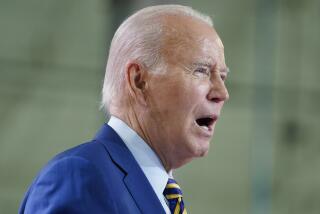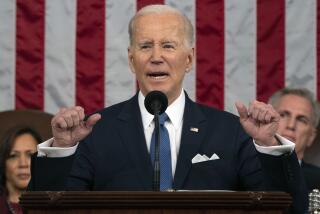Healthcare bill a numbers game
- Share via
WASHINGTON — As the Senate Finance Committee begins reworking Sen. Max Baucus’ healthcare bill today, the focus will be on keeping the final price tag below $900 billion -- a target considered crucial to winning over moderate Democratic votes.
But the cost estimates in the proposal -- like those attached to many of the 500-plus amendments lined up for committee consideration -- involve budgetary sleights-of-hand designed primarily to serve political ends.
As a scaled-back alternative, the now $774-billion finance committee bill is probably the best hope for getting a healthcare overhaul through the Senate. It also will establish a benchmark for negotiations. The pending House bill has a $1-trillion-plus price tag.
For many lawmakers, arriving at a politically palatable number has overshadowed what the actual cost to consumers and businesses may be.
For example, despite calling for federal subsidies to help lower-income Americans buy mandated insurance, the Baucus bill projects that by 2019 it would take in some $49 billion more than it costs.
Baucus announced Monday that this projected surplus would pay for added provisions to make care more affordable for low- and middle-income consumers. The expanded provisions were an attempt to head off an uprising among the committee’s 23 members.
“Baucus learned a lot of lessons about how you have to construct the bill to get what you want,” said Douglas Holtz-Eakin, a former chief of the Congressional Budget Office.
The CBO provides government cost-estimates, and Baucus has tailored some of his major proposals to take advantage of its particular accounting methods. For example, the CBO estimates costs over a 10-year period, but many of the most expensive provisions in Baucus’ plan don’t kick in until 2013 -- shrinking the 10-year average and making the bill appear more budget-friendly.
Similarly, Baucus holds down the total cost of his proposals by assuming that cuts in Medicare reimbursements to doctors will save the government money. Yet Congress has blocked those cuts in recent years and is widely expected to do so again. Not making the cuts would cost the government more than $200 billion.
Another element in the bill being considered today involves revenue from a proposed 35% excise tax on insurers who offer “Cadillac plans” -- policies with a yearly premium cost of $8,000 for an individual and $21,000 for a family. The tax is estimated to generate $215 billion over 10 years.
Critics say that would drive consumers away from the most expensive plans and dry up revenue. “They’re assuming that everybody’s going to keep offering and buying these Cadillac plans. A 35% tax is huge,” said Michael Tanner, a health policy analyst at the Cato Institute, a libertarian think tank.
Not all the politically favorable assumptions are in Baucus’ bill. The House and President Obama’s strategists have played the game too.
Like the Senate, they have pledged to slash payments to Medicare Advantage, a popular private insurance plan. The bill moving toward action in the House assumes $156 billion in savings from reduced Advantage payments.
But Advantage is used by a quarter of all Medicare recipients, and many seniors say they like it because of its service and convenience. Congress has shied away from cutting it in the past. And the Senate Finance Committee will consider a proposal to protect it.
If a final healthcare bill becomes law and ends up carrying a higher price tag than forecast, it won’t be the first time. During negotiations in 2003 over the Medicare Part D prescription drug benefit, the CBO estimated a $400-billion cost over 10 years. After the bill was enacted, the cost leaped to $724 billion.
--
kgeiger@latimes.com
More to Read
Get the L.A. Times Politics newsletter
Deeply reported insights into legislation, politics and policy from Sacramento, Washington and beyond. In your inbox twice per week.
You may occasionally receive promotional content from the Los Angeles Times.










